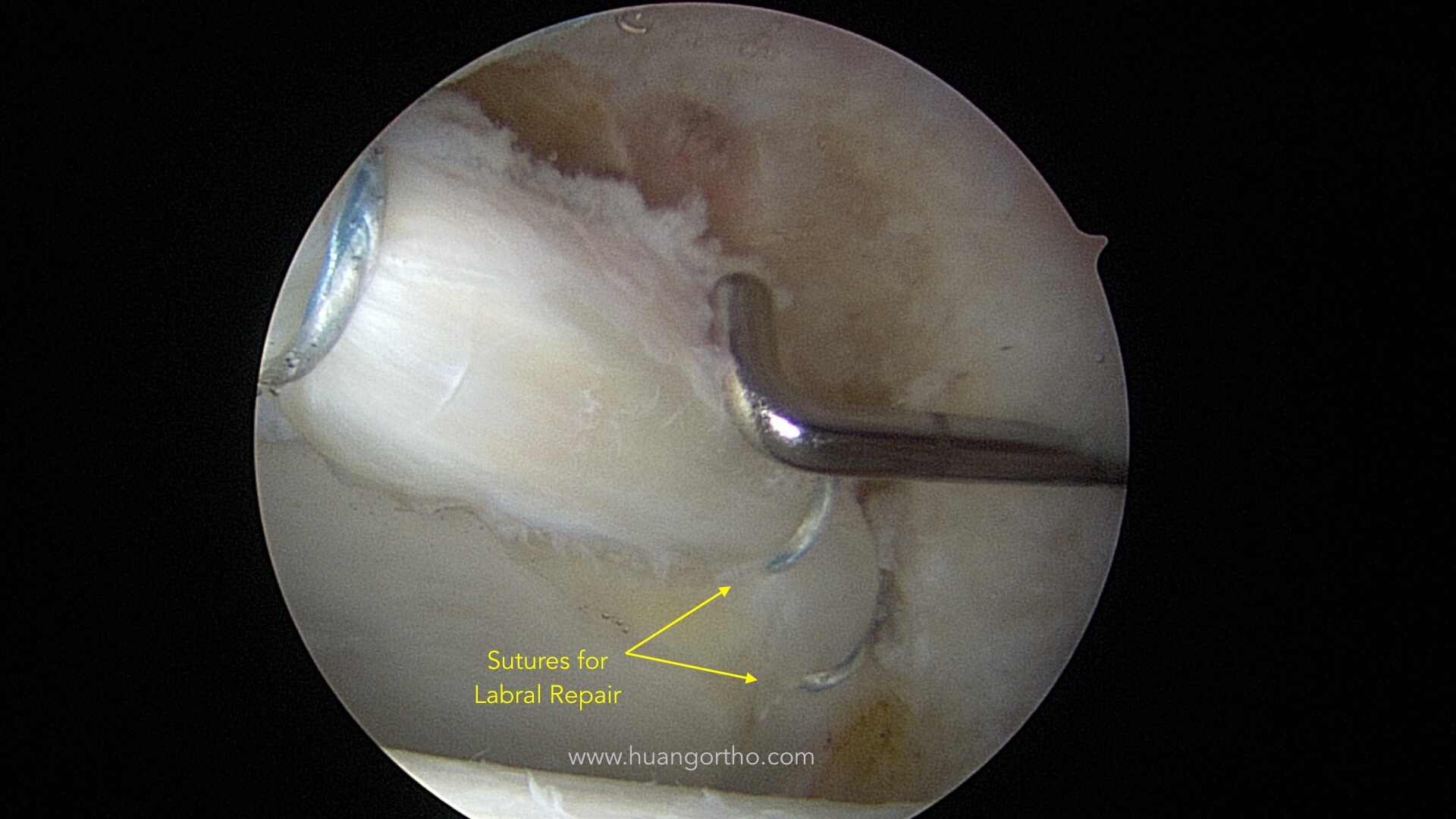Hip Labral Repair vs Reconstruction
Surgery to address hip labral damage primarily involves repairing the patient's own labrum OR replacing the original labrum with substitute tissue (reconstruction).
This video demonstrates hip labral reconstruction.
WHEN IS LABRAL REPAIR PERFORMED?
Labral repair is performed when there is adequate labral tissue available to repair and when the quality of the tissue is good enough to repair.
WHEN IS LABRAL RECONSTRUCTION PERFORMED?
Labral reconstruction is considered when the patient's tissue is inadequate for repair. This may be because the patient had prior repair that failed or re-tore. This may be because the patient has had the tear for too long. Some patients have very small labrum to begin with and while these labrum can be repaired, sometimes augmentation or reconstruction can help add tissue.
Image showing prior labral repair with re-tear
Image showing prior labral repair with re-tear
WHAT IS THE DIFFERENCE AT SURGERY BETWEEN THE TWO PROCEDURES?
Primary labral repair using patient's labral tissue.
Labral Repair: During labral repair, the patient's labrum is preserved. The area of tearing is identified and the labrum is reattached to the edge of the acetabulum (socket) where it belongs.
Surgery typically takes 2 hours, with 2-3 arthroscopic portals. Recovery is approximately 6 months.
Labral Reconstruction: During labral reconstruction, the area of labral damage is removed. A tendon graft is prepared and then inserted into the joint. The graft is then anchored and fixed to the edge of the acetabulum (socket) to become the new labrum.
Surgery typically takes 3-4 hours, with 3-4 arthroscopic portals. Recovery is approximately 6 month to 1 year.
Hip labral reconstruction with graft attached to acetabulum
Hip labral reconstruction with graft attached to acetabulum
Hip labral reconstruction graft with traction off demonstrating restoration of hip joint seal
Hip labral reconstruction graft with traction off demonstrating restoration of hip joint seal in hip flexion







